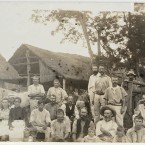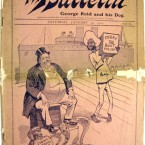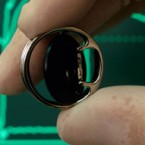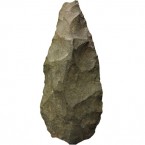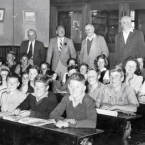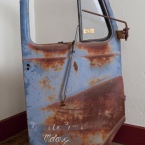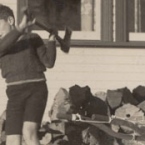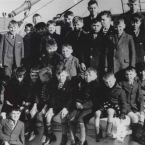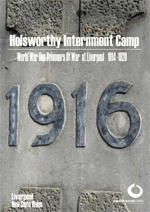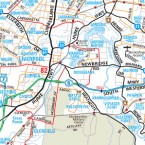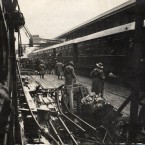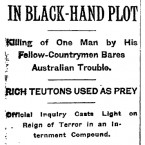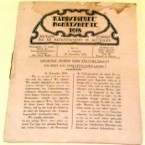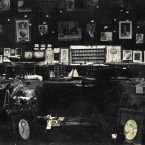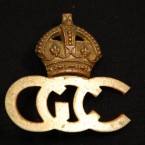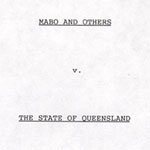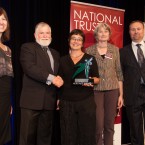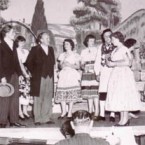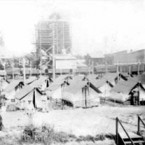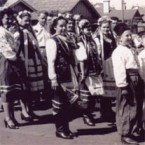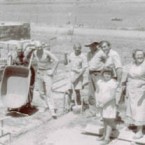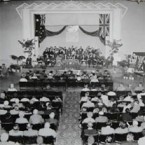Paraguay was the destination to an Australian diaspora that began 120 years ago. New Australia and Cosme were socialist utopian colonies established in Paraguay in 1893 and 1894 by a group of Australians migrants led by William Lane. Continue reading
Between 1880 and 1918 The Bulletin cruelly lampooned colonial governors, business leaders, the bourgeoisie, the church, feminists and prohibitionists. It supported the labour movement, Australian independence, liberal democracy and White Australia. Continue reading
A artificial heart valve dubbed the ‘St Vincent’s Heart Valve’ designed by Dr Victor Chang for the replacement of dysfunctional ventricle heart valves in people with chronic heart disease. Continue reading
This hand axe was found in 1931 by Louis Leakey in the Olduvai Gorge in Tanzania, and is dated to about 1.2 million years ago. Continue reading
The Molong and District Historical Society would like to extend its gratitude to the many people and organisations who have contributed to this exhibition. Molong Historical Society Members Marie Hammond John Austin Des Sullivan Maureen Kirkwood The Molong Historical Society … Continue reading
The daily duties at Fairbridge Farm School included collecting eggs from the poultry shed. Image courtesy Bigrigg Collection, Molong and District Historical Society Construction of Fairbridge Farm School at Molong began in 1937. The original plan was for 20 cottages, … Continue reading
Door from Fairbridge School Bus The Fairbridge Farm School was located 6.4kms from the town centre of Molong. Recent oral histories indicate that although it was run autonomously, the Fairbridge Farm School was connected to the town and community of … Continue reading
Many of the former child migrants at Fairbridge Farm, Molong, now aged in their 60s and 70s, are talking for the first time about their experiences. A number of them speak of loneliness, poor food and limited education, while others talk … Continue reading
Kingsley Fairbridge. Image courtesy National Library of Australia In 1909, South African born Kingsley Fairbridge founded the Society for the Furtherance of Child Emigration to the Colonies. Its focus was to educate orphaned and neglected children and train them in … Continue reading
The first party of children for the Fairbridge Farm School pose for the camera on the SS Orama, 1938. Image courtesy Woods Collection, Molong and District Histroical Society The shape of Britain’s economic state and social services in the 19th … Continue reading
A B C D E F G H I J K L M N P R S T V W Z A Aaron, Moses Altena, Anita van Anagnostou, Alexander Aquino, Marta Arena, Franca Artese, Domenica Ataya, Chafic B Babij, Anna … Continue reading
Bookmark on DeliciousRecommend on FacebookShare with StumblersTweet about it
The largest internment camp in Australia during World War One was at Holsworthy, near Liverpool on the outskirts of Sydney. The camp held between 4,000 and 5,000 people of German descent.
A NSW Migration Heritage Centre exhibition.
Continue reading
Credits Written by Stephen Thompson, NSW Migration Heritage Centre Website design by Annette Loudon, NSW Migration Heritage Centre, closely based on original booklet design by Stephen Thompson Background image: The Migration Heritage Centre at the Powerhouse Museum is a NSW … Continue reading
Liverpool Regional Museum Hume Highway Liverpool NSW 2170 Phone 02 9602 0315 www.liverpool.nsw.gov.au/liverpoolregionalmuseum.htm Army Engineer Museum RAE Steele Barracks Moorebank Avenue, Moorebank. Holsworthy NSW 2173 Phone 02 8782 4385 www.liverpool.nsw.gov.au/armyengineermuseum.htm Casula Powerhouse Arts Centre 1 Casula Road … Continue reading
Holsworthy camp remained open until the last internees and prisoners of war were Holsworthy camp remained open until the last internees were deported to Germany in 1920. The total number of people deported was 6,150. Of these, 5,414 people had … Continue reading
In 1915 a criminal gang began operating in the camp. It was reported that this gang was called the Black Hand Society. The Black Hand Society was formed in 1911 in Serbia. The Black Hand Society wanted an independent Serbian … Continue reading
Kamp Spiegel was published from 1916 to 1917. Ludwig Schröder published the weekly newspaper Kampspiegel Wochenschrift which ran from April 1917. In April 1918 it was renamed Kampspiegel Monatshefte and ran monthly until late 1918. All three newspapers were financed … Continue reading
Craft making and theatre and other cultural activities where pursued at Holsworthy as they were at Trial Bay and Berrima, but the overarching atmosphere of the place was confinement, deprivation of liberty and constant surveillance. Unlike the internees at Trial … Continue reading
Of all the camps Holsworthy was the harshest and resembled a prison in the true sense of the word. A strict regime of control was enforced by the camp authorities. Raids often turned up stills and grog making faculties. Internees … Continue reading
Like Trial Bay and Berrima the Australian Army managed the operation and functions of the Holsworthy Camp. The internal policing, educational, cultural and social activities were left largely to the Camp Committee made up from the internee population. Like Trial … Continue reading
The High Court Mabo Case Decision No. 2 is evidence of the connection between land, identity and continuity of family and community felt by indigenous people in Australia and around the world. Continue reading
Did You Know? illustrates the important role migrants have played in the economic and social development of Australia.
A Community Relations Commission for a Multicultural NSW and NSW Migration Heritage Centre exhibition. Continue reading
Meet Anita van Altena and see the silver cork stopper she brought from Holland in 1964 to start up her own business in Australia. Continue reading
04 – BLOOMFIELD HALL Canoblas Dr, Bloomfield Bloomfield Hall became renowned in the 1950s and 60s as a place of first-rate entertainment, largely through the exceptional talents and hard work of a number of migrants who worked at Bloomfield Hospital. … Continue reading
03 -’TENT CITY’ COMMONWEALTH MIGRANT HOSTEL Edward St, Orange Accommodation in Orange was scarce when post-war migrants started arriving in the late 1940s. The first group of male migrants to be allocated work at the Emmco factory were given two-man … Continue reading
07 – UKRAINIAN HALL Dalton St & Clinton St, Orange Orange’s Ukrainian community constructed this hall so that they could hold dances and other social functions. Recorded or live music added to the occasion and the events were so popular … Continue reading
05 – TYNAN STREET Tynan St, Orange During the 1950s Tynan Street became almost exclusively home to migrants of various ethnic backgrounds. Attracted by cheap land, they usually built a ‘temporary dwelling’ first, then as funds became available, helped one … Continue reading
06 – STRAND THEATRE Summer St & Peisley St, Orange The Strand Theatre was one of a number of venues in Orange where migrants attended naturalisation ceremonies. Perfunctory ceremonies had originally been held in court houses, but when Orange City … Continue reading
Curator and project management Stephen Thompson Web design Annette Loudon, closely based on Objects Through Time book cover design by Danny Jacobsen Policy and guidelines drawn from the Heritage Collections Council’s Significance manual Thanks to Museum of the Riverina, British … Continue reading
